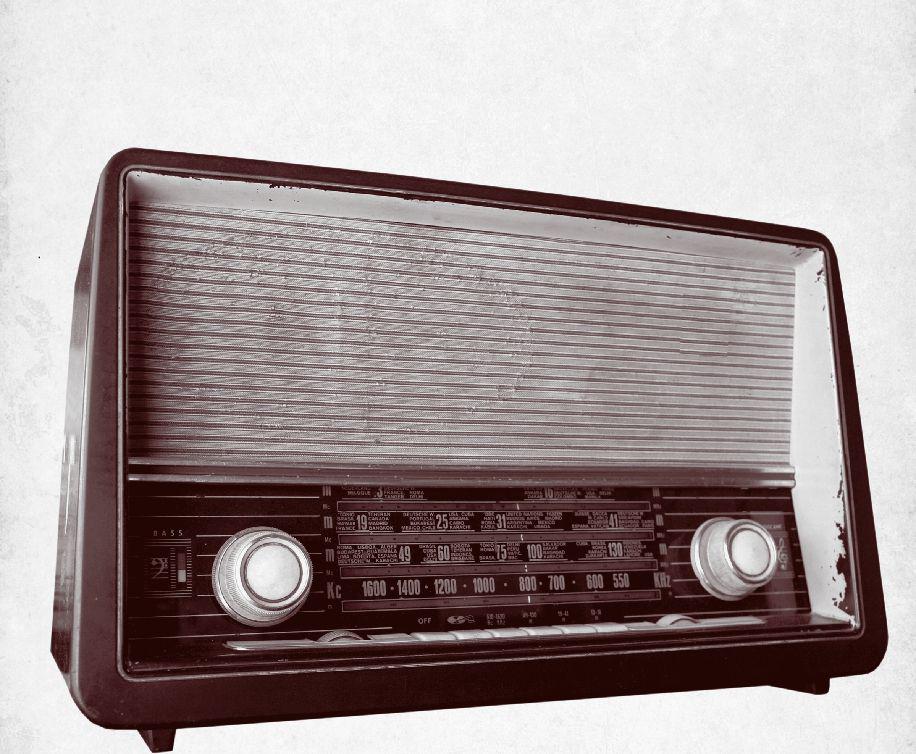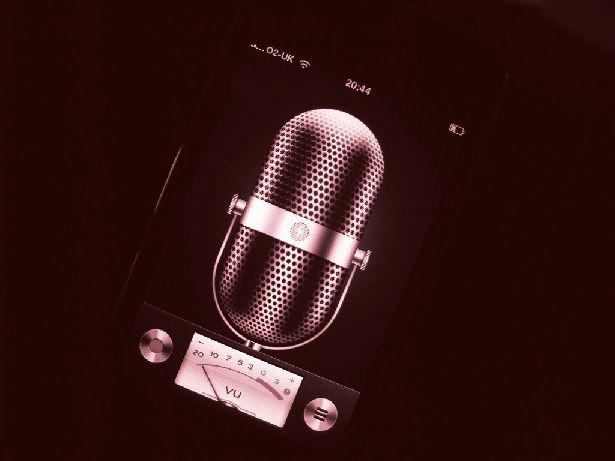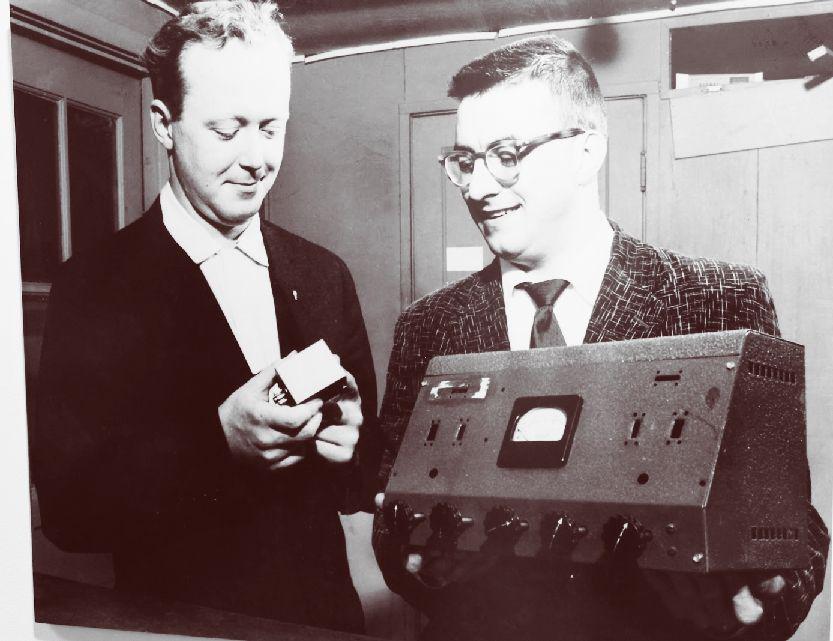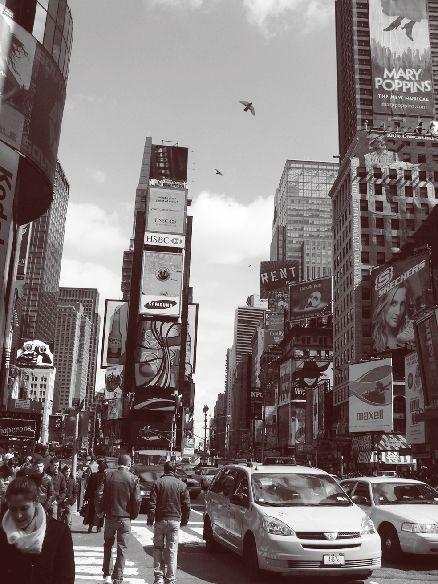商业广告初袭电波九十载
2013-01-31
如今,从传统的纸质广告,到利用新媒介的网络广告,可以说,商业广告已经充斥着我们生活的方方面面。然而,当商业广告发展之初,同样面临着窘境,尤其是在20世纪初期,广播行业蓬勃发展,如何利用广播进行商业广告宣传并且使双方都从中获益,成为当时商业界的热门话题。那么,在首支广播商业广告播出90年后的今天,让我们一起来聆听历史的声音,了解下背后的故事吧。

Audie Cornish (Host): 90 years ago this week, back in 1922, Americas airwaves changed forever. New York radio station [1]WEAF broadcast the first paid radio commercial for the Hawthorne Court Apartments in [2]Jackson Heights. Producer John McDonough tells us that behind that ad and the birth of commercial radio was the Bell Telephone Company.
John Mcdonough: You dont have to go back 90 years to imagine what radio was like in the summer of 1922, just recall the state of the Internet about a dozen years ago, a modern miracle of technology with one problem: Nobody knew how to make it pay. Well, that was radio in 1922. How do you finance an endless stream of programming and still make money? One possibility, the profits from radio receivers, which may explain why so many department stores built their own broadcast stations that year.
But eventually, everyone has a radio set at home. What then? Broadcastings problem was that it had much to give but nothing to sell. But there was one company that was thinking very much about sales and money in 1922, and that brings us to WEAF and the business model behind it. So obvious, it was invisible in plain sight.
(Soundbite of dialing)
Mcdonough: It was the simple telephone call. Bell Telephone and its parent, [3]AT&T;, might never have joined the race into radio at all if it hadnt acquired a critical patent in 1913. When the 1)vacuum tube turned out to be a key piece in radio broadcasting, it gave the phone company a prominent seat at the radio table in 1922. More important, AT&T; understood from the beginning exactly what it was that radio could sell. It was time.
(Soundbite of archived broadcast)
Unidentified woman #1: Your call, please.
Unidentified man#1: Long distance.
Unidentified woman#1: Long distance, certainly.
Mcdonough: Some of you may recall the ceremony that once attended a long-distance phone call. Orson Welles immortalized its elegant rituals in this 1942 radio drama.
(Soundbite of archived broadcast)
Unidentified woman #1: This is long distance.
Unidentified man#1: Id like to put in a call to my home in Brooklyn, New York. The number is Beechwood 2028.
Unidentified woman#1: Certainly. I will try to get it for you.
Mcdonough: AT&T; could carry any message to any place at any time. The content was up to the caller. All he would pay for was the time it took to talk.
(Soundbite of archived broadcast)
Unidentified woman#2: Will you please deposit$3.85 for the first three minutes?
Mcdonough: And 2)therein lies the key to the future of commercial broadcasting. The 3)mechanics of placing such a call today are 4)camouflaged in the conveniences of area codes and direct dialing. But as any cell phone user learns once a month, he is still buying exactly what the telephone company had been selling for 40 years in 1922: time measured in exact minutes and seconds on a communication system for hire.
(Soundbite of coin clunking)
(Soundbite of archived broadcast)
Unidentified woman #2: Will you please deposit the remaining 85 cents?
Mcdonough: For AT&T;, radio was a natural extension of the business it had built around the telephone, and it was on precisely that model that it opened its first radio station in 1922.

(Soundbite of archived broadcast)
Unidentified man #2: WEAF New York...
Mcdonough: Where other stations had spoken only for themselves, WEAF spoke for no one. It had no cause to promote, no interest to represent. Its only purpose was to trade time for money. Its studio was essentially a phone booth to the airwaves. Anyone who wanted to buy access had to bring his own message and pay the toll. The stations first customer was the Hawthorne Court Apartments in Jackson Heights, New York. The company bought 10 minutes for $50.
Around 5 p.m. Eastern Time on Monday, August 28th, an officer of the company made his sales pitch. No recording of that commercial exists, but on WEAFs 30th anniversary, with the original moment still in living memory, the station offered this brief 5)capsule recreation.
(Soundbite of archived broadcast)
Unidentified man #3: Friend, you owe it to yourself and your family to leave the 6)congested city and enjoy what nature intended you to enjoy. Visit our new apartment homes in Hawthorne Court, Jackson Heights, where you may enjoy community life in a friendly environment.

Mcdonough: With those words, modern broadcast advertising was born. The developer bought more time, then an oil company went on the air, then the [4]American Express Company. By October 1922, WEAF had 7)logged total time sales of $550. It called its service “toll broadcasting”. Four years later, AT&T; sold WEAF to the [5]National Broadcasting Company and left radio 8)for good. But it left behind the financial structure on which American commercial broadcasting would grow rich through advertising.
WEAF would become the 9)flagship station of the NBC network. It became WNBC in 1946 and disappeared in 1988. Its old 660 position on the New York 10)AM dial is now home to WFAN, a sports station owned by [6]CBS. As for Hawthorne Court, it now enjoys landmark status in New York. It remains a lovely, diverse, middle-class neighborhood, where a 11)gracious three-bedroom 12)condo sells for around $700,000. But this is getting to sound like a commercial, and thats where I came in.
奥迪·科尼什(主持人):回到1922年,也就是90年前的这个星期(译者注:此处指的是1922年8月28日),美国广播界发生了前所未有的变化。纽约广播电台WEAF为位于杰克逊海茨的霍索恩院公寓播出了首支付费广播广告。制作人约翰·麦克唐纳告诉我们那背后的故事,以及促成商业广播广告诞生的是贝尔电话公司。
约翰·麦克唐纳:你大可不必回到90年前去想象1922年夏天的无线广播是什么样的,只需回想一下十几年前互联网的状况,一个现代技术的奇迹却遭遇了一个难题:没人知道如何从中获利。这正如1922年广播电台遭遇的境况。如何给大量节目筹集资金并从中获利呢?有一种可能是,从无线电接收器上获得利润,这就是为什么那年众多百货公司纷纷设立自己的广播电台。
但是后来,每户人家里都有一台收音机,那又怎么样呢?广播的问题在于,它传递出许多信息,但却没有什么可以销售。但是1922年,有一个公司对(广播的)销售和盈利考虑甚多,并由此产生了纽约广播电台(以下称WEAF)和它背后的商业模式。因此很显然,它是无形的,却又显而易见。
(电话拨号声)
麦克唐纳:这就是简单的打电话。贝尔电话公司和它的母公司美国电话电报公司(以下称AT&T;)要不是于1913年获得了一项重要的专利,他们可能根本不会涉足广播行业。到了1922年,当真空管成为广播设备中的关键零部件时,这让电话公司在广播行业中站稳了脚跟。更重要的是,AT&T;一开始明确意识到广播可以销售什么,那就是时间。
(广播录音片段)
女声1:轮到您打电话了。
男声1:我要打长途电话。
女声1:当然可以,长途电话。
麦克唐纳:一些人可能会想起打长途电话的礼仪。奥森·威尔斯在1942年的广播剧【译者注:这里指《安倍逊大族》(The Magnificent Ambersons)】中使这一优雅的礼仪得以名垂不朽。
(广播录音片段)
女声1:这里是长途电话局。
男声1:我想打电话到纽约布鲁克林我的家里,号码是
Beechwood 2028。
女声1:好的,马上帮您连线。
麦克唐纳:AT&T;能随时随地替你传递信息。内容由拨打者决定,收费则取决于通话时长。
(广播录音片段)
女声2:请您支付前三分钟的通话费用3.85美金。
麦克唐纳:这就是未来商业广播的关键所在。如今这种打电话的收费构成被区号和直拨的便利性所掩盖。但是正如手机用户每个月了解到的那样,他依旧是按照电话公司采用了40年,也就是从1922年开始的收费模式在购买通话服务:在租用的通话系统里,收费是严格按照时间计算的,精确到分和秒。
(硬币声)
(广播录音片段)
女声2:请您支付余下的85美分。
麦克唐纳:对AT&T;来说,广播是其围绕电话业务建立的商业模式的自然延伸,在1922年,它的首个广播电台创立,这种精确的模式得以延续。
(广播录音片段)
男声2:这里是纽约广播电台……
麦克唐纳:其他的广播电台都为自己宣传,WEAF却不然。它不为任何人宣传,也没兴趣为他人代言,它的目的只在于销售时间来获利。播音室本质上就是个通过电波传递信息的“电话亭”。任何人想要借此传递出信息(译者注:指播广告)都需要付费。广播电台的首位顾客是位于纽约杰克逊海茨的霍索恩庭院公寓,该公司花了50美元购买了10分钟的广告。
美国东部时间(1922年)8月28日,星期一,大约下午5点,该公司的一位职员(通过广告)为其销售做宣传。关于该广告的记录已不复存在,但是在WEAF的30周年庆上,基于这依旧存在于人们脑海中的原始版本,电台再创作了一个压缩精简版。
(广播录音片段)
男声3:朋友,你应该为自己和家人考虑,离开拥挤的城市,回归自然。请到杰克逊海茨的霍索恩庭院公寓来,这里你能在友好的环境中享受社区生活。
麦克唐纳:那段话标志着现代广播广告的诞生。房地产开发商购买了更多的时间,然后一个石油公司也通过广播播放广告,接着是美国运通公司。到1922年10月,WEAF记录在案的时间销售额达到550美元。他们将这种服务称为“付费广播”。四年后,AT&T;将WEAF出售给美国全国广播公司,至此永久离开广播业。但是它留下了一套财政结构,使美国商业广播通过广告而获利甚多。(译者注:WEAF电台的成功模式被称为“广播链”,即今天所说的“广播协作网”。)
WEAF成为NBC广播网的旗舰电台。1946年,WEAF更名为WNBC,到1988年不复存在。(译者注:通用电气于1986年收购了NBC,认为其广播事业与他们的长远发展不符,于是将广播网络的运营出售给哥伦比亚广播公司旗下的Westwood One。)它过去在纽约的调幅660波段现在归属于哥伦比亚广播公司旗下的体育电台WFAN。至于霍索恩庭院公寓,如今其所在区域享有纽约的地标建筑,仍然是环境优美、多元化、中产阶级聚居地。(译者注:霍索恩庭院公寓位于纽约布鲁克林区,此处有地标建筑布鲁克林大桥。)在这里,仍然可以花大概70万美元的价格买到一所别致的三居室公寓。这听起来像是广告,但是这正是我所来的地方。
[1] WEAF 纽约广播电台,最初是AT&T;旗下西部电力公司的一个试验机构,负责制造接收设备和天线。同时AT&T;旗下的贝尔电话公司当时正在研究可以实现较高质量的音频传播技术,所以AT&T;于1922年开办了WEAF电台作为研究和发展中心。之后WEAF被RCA(Radio Corporation of America,BMG唱片集团旗下的名牌唱片公司)收购,1926年,NBC(National Broadcasting Company,美国全国广播公司)成立,WEAF成为其中的红网(the NBC Red Network),播出娱乐和音乐节目。
[2] Jackson Heights 杰克逊海茨,地名,位于纽约市皇后区。
[3] AT&T; 美国电话电报公司,财富500强公司之一,总部设在美国纽约。
[4] American Express Company 美国运通公司,是全球最大的旅游服务及综合性财务、金融投资、信息处理的环球公司,成立于1850年,总部设于美国纽约。该公司在信用卡、旅游支票、旅游、财务计划及国际银行业占领先地位,是反映美国经济的道琼斯工业指数三十家公司中唯一的服务性公司。
[5] National Broadcasting Company 美国全国广播公司,简称NBC,是全美三大广播电视公司之一,创办于1926年,总部设于纽约,是美国历史最悠久、实力最强的商业广播电视公司。
[6] CBS 哥伦比亚广播公司,是Columbia Broadcasting System的简称,成立于1927年,是美国三大商业广播电视公司之一。

广告发展史
从远古时代到1450年古登堡发明活字版印刷的原始广告时期
这一时期的广告只能是手工抄写,数量有限,传播也有限。
在古希腊、古罗马时期,一些沿海城市的商业比较发达,广告已有叫卖、陈列、音响、文图、诗歌和商店照片等多种形式,在内容上有推销商品的经济广告、文艺演出、寻人启事等,还有用于竞选的政治广告。
从1450年到1850年的印刷广告时期
这一时期由于报纸杂志尚未成为大众化工具,因此,广告的范围也很有限。
1450年,德国人古登堡使用活字印刷术,使西方步入印刷广告时代。
1475年,英国人威廉·卡克斯顿在英国办了一所印刷厂,印出了第一本英文书和推销该书的广告。此后,印刷业逐渐在欧洲大陆的其他国家得以发展。
16世纪,欧洲经历了文艺复兴的洗礼,资本主义经济进一步发展;美洲大陆的发现、环球航行的成功和殖民化运动的兴起,使生产和消费都成为具有世界色彩的事物。这一时期出现了现代形式的广告媒介——报纸。但报纸的发行量很小,远远未达到大众化,因此,报纸广告的影响面很小。与此同时,杂志也陆续出现。
1706年,德国人阿洛伊斯·重菲尔德发明了石印,开创了印刷五彩缤纷的招贴广告的历史。
报纸杂志媒介大众化时期
1850年到1911年,世界上有影响的报纸相继创刊:英国的《每日邮报》、美国的《纽约时报》、日本的《读卖新闻》和《朝日新闻》,以及法国的《镜报》等。在当时,所有报纸的主要收入来源都是广告,工厂企业也利用这个媒介来推销产品。
1853年,在发明摄影不到数年的时间里,纽约的《每日论坛报》第一次用照片为一家帽子店做广告。从此,广告就开始利用摄影艺术作为其技术手段。
广告在这一发展阶段的另一重要进步,就是广告公司的兴起。1841年帕默在费城创立了世界上最早的广告公司。1869年,在美国费城出现了第一家具有现代意义的广告代理公司——爱益父子公司。此后,不同规模的广告公司相继出现。
广告行业走向成熟的时期
广告业在这一时期的重大发展之一,是广播、电视、电影、录像、卫星通讯、电子计算机等电讯设备的发明创造,使广告进入了现代化的电子技术时代。除了电视和广播外,报纸杂志及其他形式的印刷广告,也因电子技术的应用而得以迅速发展。广告已成为报纸杂志的生命主宰和收入来源。此外,各种博览会也成为重要的广告形式。
现代广告的第三个重大发展,就是广告管理水平的提高。广告公司的专业水平和经营管理水平均大有改进,而政府部门也通过立法管理等形式规范和约束广告公司的行为,规定广告业的发展方向。同时,政府还设立专职管理机构,从事广告管理。
现代信息产业时期
进入二十世纪80年代以后,现代工商业迎来了信息革命的新时期,广告活动遍布全球。许多广告公司也由简单的广告制作和代理发展成为了一个综合性的信息服务机构,广告技术也由电子技术所代替。
与此同时,现代广告公司也发展成了集多种职能为一体的综合性信息服务机构,负责收集和传递政治、经济、社会、文化等各种各样的信息,并把这些信息用来指导企业的新产品开发、生产和销售,为工商企业的商品生产和销售提供一条龙的信息服务。

